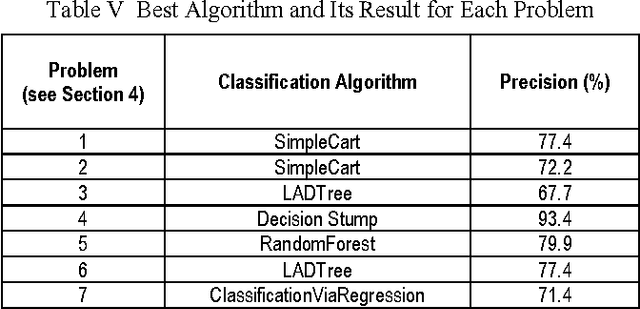Clifton Phua
Predicting Near-Future Churners and Win-Backs in the Telecommunications Industry
Oct 24, 2012



Abstract:In this work, we presented the strategies and techniques that we have developed for predicting the near-future churners and win-backs for a telecom company. On a large-scale and real-world database containing customer profiles and some transaction data from a telecom company, we first analyzed the data schema, developed feature computation strategies and then extracted a large set of relevant features that can be associated with the customer churning and returning behaviors. Our features include both the original driver factors as well as some derived features. We evaluated our features on the imbalance corrected dataset, i.e. under-sampled dataset and compare a large number of existing machine learning tools, especially decision tree-based classifiers, for predicting the churners and win-backs. In general, we find RandomForest and SimpleCart learning algorithms generally perform well and tend to provide us with highly competitive prediction performance. Among the top-15 driver factors that signal the churn behavior, we find that the service utilization, e.g. last two months' download and upload volume, last three months' average upload and download, and the payment related factors are the most indicative features for predicting if churn will happen soon. Such features can collectively tell discrepancies between the service plans, payments and the dynamically changing utilization needs of the customers. Our proposed features and their computational strategy exhibit reasonable precision performance to predict churn behavior in near future.
A Comprehensive Survey of Data Mining-based Fraud Detection Research
Sep 30, 2010



Abstract:This survey paper categorises, compares, and summarises from almost all published technical and review articles in automated fraud detection within the last 10 years. It defines the professional fraudster, formalises the main types and subtypes of known fraud, and presents the nature of data evidence collected within affected industries. Within the business context of mining the data to achieve higher cost savings, this research presents methods and techniques together with their problems. Compared to all related reviews on fraud detection, this survey covers much more technical articles and is the only one, to the best of our knowledge, which proposes alternative data and solutions from related domains.
 Add to Chrome
Add to Chrome Add to Firefox
Add to Firefox Add to Edge
Add to Edge